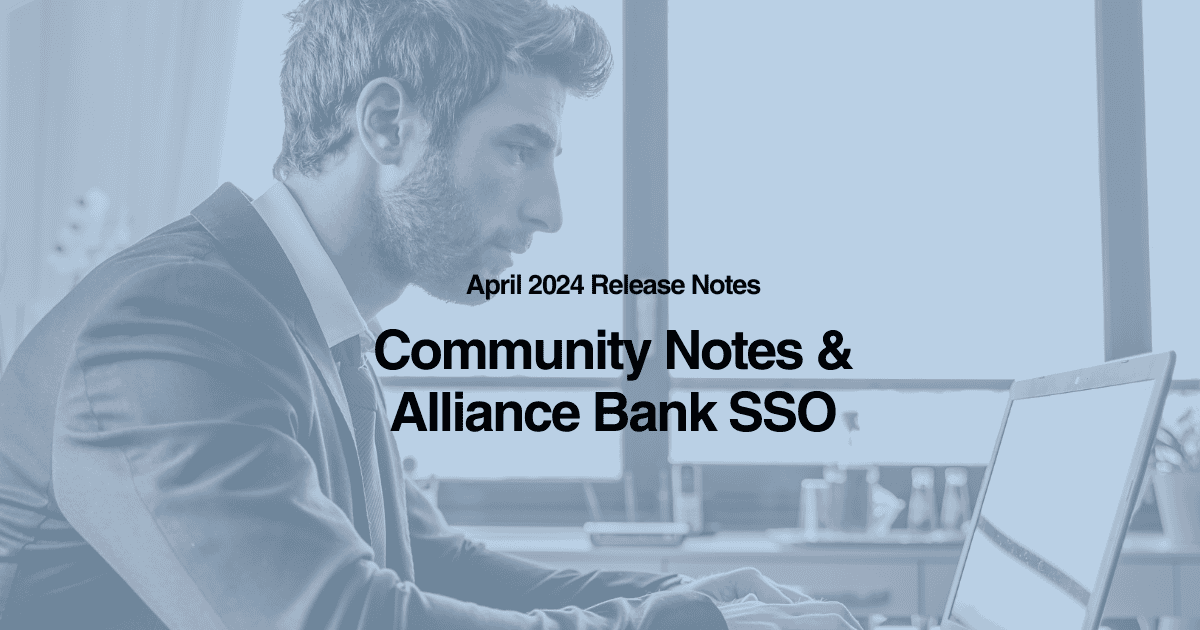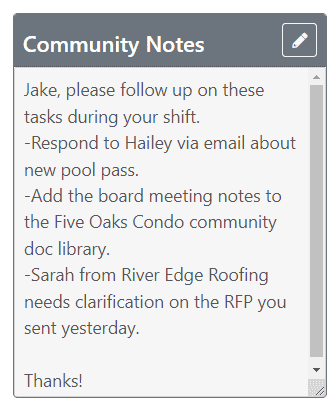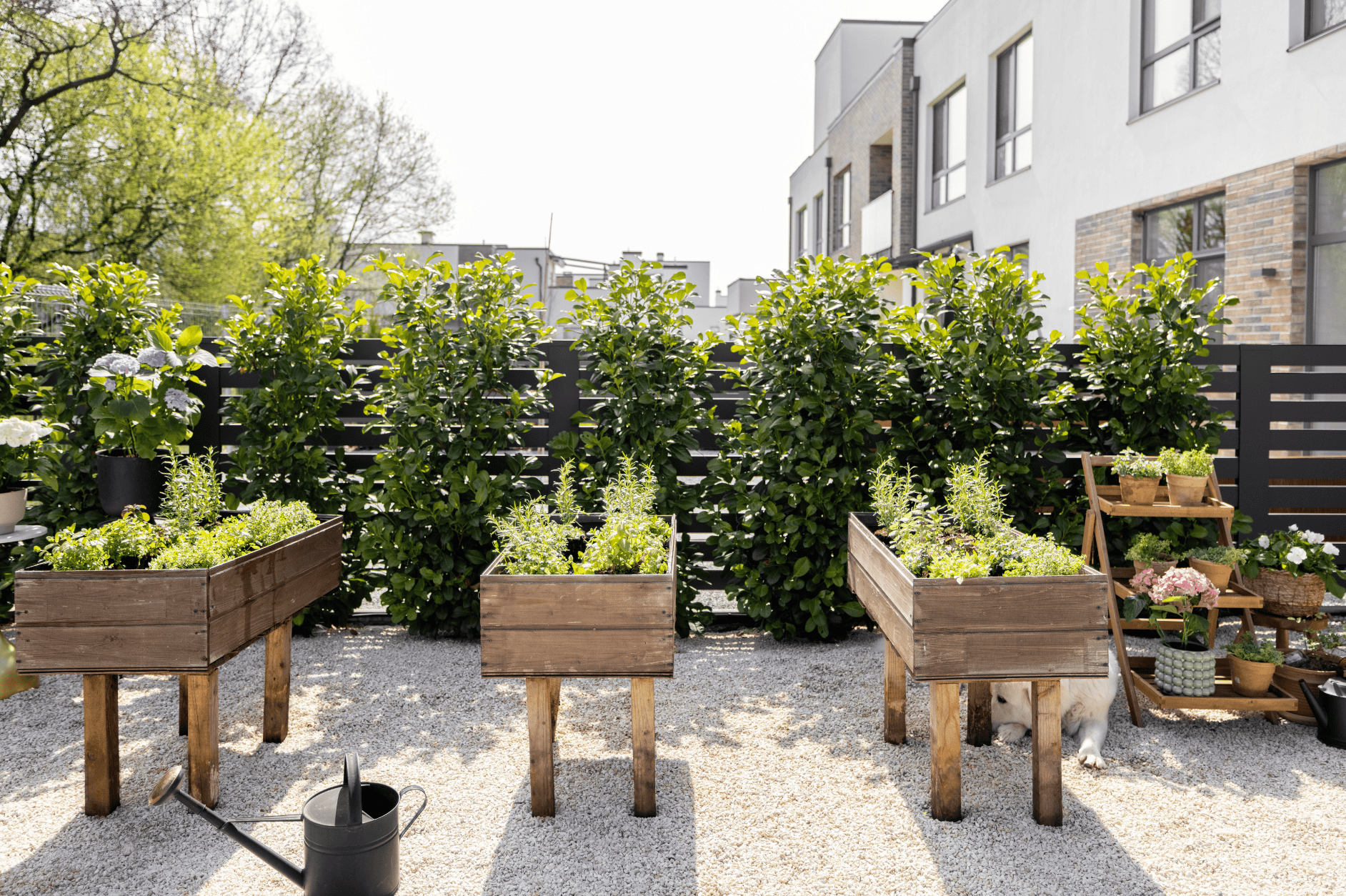Blog
Discover valuable tips and innovative strategies for improving community management. Dive into the Pilera blog today for expert advice and the latest industry updates!


Community Association Management Companies (CAMs) play an important role in managing administrative, accounting, financial, and maintenance tasks for the communities that have hired them. However, when servicing clients, CAMs face various challenges, such as resident dissatisfaction, overburdened managers, and dissatisfied boards. These issues often arise from a lack of forming and maintaining strong connections with their communities. That’s where a CRM comes in.
This blog post will look at the top challenges management companies face, how a CRM can address these challenges, and why implementing a CRM is vital. Thus, we will equip you with the correct tools and knowledge to improve resident happiness, board connections, and management efficiency.
Challenges that management companies are currently struggling with
Low Retention Rate
Community Association Management companies often struggle with low retention rates. This issue primarily manifests as most HOA communities leave their current management company within two years, opting to either self-manage their community or sign on with a competing management company.
This revolving door phenomenon forces CAM companies to seek new clients to replace the clients they have lost. This adds extra strain to management companies because they spend more time acquiring new sales. Moreover, high turnover in community management can undermine the trust and satisfaction of existing clients, who may perceive it as instability or lack of value in the services provided. Focusing your efforts on retention becomes vital through strong client relationships, proactive communication, and demonstrating value to ensure long-term satisfaction.
Eroding Resident Trust
Many management company interactions center around payment requests, invoicing, collections, and handling violations. Over time, the transactional nature of these relationships can make residents feel less valued, unheard, and unsatisfied. As trust erodes, residents may become more hesitant to participate in community activities, resulting in strained relationships and possible disputes.
Board Doubt and Oversight
Board members may often raise concerns about the value they’re getting from your management services. They want to be certain that services are efficient, jobs are completed on time, and communication is clear. Thus, a lack of proper management of community issues or communications can strain the board-management relationship.
Operational Inefficiencies
Community Association Management companies frequently face inefficiencies, such as manual processes, data in different places, and communication gaps. These inefficiencies can result in delays when responding to resident issues and inconsistent or poor service, all leading to increased workloads for managers. Additionally, operational efficiencies lead to more unpredictable schedules and stress for managers.
Limited Resident Engagement
Creating a sense of community and encouraging resident participation is important for a well-functioning community. However, management companies often struggle to keep residents informed. Limited communication channels and a lack of personalized interactions can all hinder building an engaged community.
Outdated Technology
Leveraging the latest technology is important for delivering exceptional customer service. However, several management companies are tethered to outdated systems. Being stuck in the past technologically can throw a wrench into your communication, data management, and operational efficiency. This ultimately diminishes the quality of services you provide to communities.
How CRM can help CAMs build better connections
By leveraging an industry-specific CRM, management companies can streamline operations, build resident trust, and improve board relationships. Let\’s discuss how CRM built specifically for the CAM industry can help your company.
1. Track resident interactions and provide support
With a CRM system, management companies can easily track resident interactions and provide efficient assistance. Here\’s a deeper look at how CRM may solve these key concerns:
Centralized Data Management
CRM enables management companies to keep all resident-related information in one unified platform. This includes residents’ contact information, communication choices, service requests, support requests, payment history, and unit information.
Centralizing data has many benefits. It enables your staff to access up-to-date resident information, reducing response times and increasing overall efficiency. It also improves data quality and consistency, decreasing mistakes and redundancies in resident records. Furthermore, having a centralized database allows team members to collaborate more effectively since everyone can access the same data source.
On-Demand Support through a Knowledge Base
One significant benefit of adopting a CRM system built for the community management industry is the ability to provide on-demand help through a searchable knowledge base. A knowledge base stores important community information, such as frequently asked questions, troubleshooting tips, and community policies and procedures.
Residents have 24/7 access to the knowledge base, allowing them to solve common problems at their own convenience. This eliminates the need for support teams to handle common questions, allowing them to focus on more meaningful or urgent tasks. A well-maintained knowledge base also improves resident satisfaction by delivering prompt and correct answers to their questions, resulting in a more efficient and streamlined support experience.
Efficient Handling of Support Tickets
CRM systems help management companies handle support issues more efficiently. When a resident submits a question or request, the CRM simplifies the process by enabling them to contact the right managers quickly.
With a CRM, you can keep residents informed about the progress of their requests, and they can communicate back with you, which creates a two-way feedback loop. This approach streamlines support processes by maintaining regular updates and keeping residents informed throughout the resolution process.
2. Communicate with residents
Effective communication lies at the heart of successful HOA management. A CRM system can revolutionize how HOA managers interact with residents, fostering efficient and personalized communication.
Proactive, Multichannel Communication
CRM solutions built for the community management industry enables you to engage with residents proactively through many channels. These channels include phone calls, emails, text messages, postal mail, website notifications, and resident portals. This proactive strategy ensures that residents receive updates, announcements, and notifications in the format that best meets their needs. Moreover, by embracing multichannel communication capabilities, management companies can improve the efficacy of their outreach initiatives, increase resident participation, and establish better community relationships.
Tailored Messages with Dynamic Distribution Group
CRM systems with communication capabilities provide dynamic distribution group functions, allowing management companies to segment residents according to locations. This segmentation allows management companies to provide relevant and targeted communications to certain groups of residents. For example, management companies can form distribution groups for homeowners, renters, and board members in a specific area for emergencies. Dynamic distribution groups help to enhance engagement, responsiveness, and resident happiness by personalizing communications to the interests and needs of each demographic.
3. Increase transparency and collaboration
Management companies must update board members regularly on the status of community tasks and projects. Here’s how a CRM improves transparency and communication with your board.
Collaborative Task Management
A task management system within your CRM allows management companies to collaborate with board members on community-related tasks. Each task can be categorized, prioritized, and assigned to a particular team or board member to ensure everyone knows their responsibilities.
Email Notifications and Updates
Task management features within a CRM can automate email alerts to board members for task assignments, changes, and updates. This proactive communication keeps board members informed and engaged with community initiatives, projects, and ongoing duties. Email notifications also function as reminders to take action and follow up.
Document Management and Sharing
Within a CRM, document management tools can help management companies store, organize, and exchange key documents, including contracts, rules, meeting minutes, and reports, with the HOA board. Authorized board members may securely view these documents, guaranteeing transparency and quick access to critical information. Additionally, document versioning and permission management improve security and governance.
Reporting and Analytics
CRM systems have extensive reporting and analytics capabilities that provide information on task progress, completion rates, resource allocation, and overall performance. Management companies can generate reports and view information on dashboards to share with the HOA board, highlighting critical data, trends, and successes. These reports provide transparency by offering information about operational efficiency, resident satisfaction, and community initiatives.
5 Features Your CRM should have
Here are the 5 features your CRM should have:
1. Communication
CRM systems should have powerful communication capabilities. Communication is vital for building connections, resolving issues quickly, and keeping stakeholders informed. CRM\’s communication component offers seamless engagement with residents and board members through several channels like email, phone, text, and portals.
With Pilera’s communication technologies, CAM benefits from seamless contact with homeowners, stakeholders, and the HOA board through many channels. This enables people to select their preferred communication channel, ensuring that timely and relevant communications reach them.
2. Customer Support
CRM systems should enable customer support teams to effectively respond to resident queries, complaints, and service requests. A CRM system with extensive customer support capabilities automates ticket administration, tracks support interactions, and guarantees that issues are resolved on time.
Pilera’s help desk function simplifies customer service for management teams. It enables managers to provide superior customer assistance by leveraging automated processes and knowledge base, increasing resident satisfaction.
3. Operations
A CRM system with strong operations management capabilities simplifies work assignment, scheduling, and tracking. It allows management companies to handle maintenance requests and track repair progress quickly.
Pilera’s operations management tool helps Community Association Management (CAM) improve task management, maintenance, ACRs, violations, and more. It also empowers collaboration with tools such as ticket assignment, automatic email notifications, and automatic audit logs.
4. Resident Engagement
Engaging residents is critical to creating a lively community and encouraging involvement in events, projects, and decision-making processes. Your HOA CRM should incorporate resident engagement features like community portals, event management, and surveys.
Pilera’s resident engagement portal offers residents a unified platform for accessing community information, participating in debates, and learning about future activities.
5. Board Collaboration
A powerful CRM should have comprehensive board collaboration tools to promote effective governance and decision-making. It allows CAM businesses to create, allocate, and monitor jobs, handle architectural modification requests, and provide reports demonstrating workload and work completion progress.
With Pilera’s board collaboration tools, CAM companies can enhance transparency, improve collaboration, and streamline operations, leading to better governance, informed decision-making, and a more cohesive community environment.
From Transactions to People-First, with CRM designed for CAMs
In conclusion, a CRM system is critical for Community Association Management organizations to manage challenges. An HOA CRM system streamlines communication, provides efficient customer assistance, optimizes operations, increases resident participation, and allows for smooth board cooperation. These capabilities enable CAM businesses to strengthen resident connections, increase transparency and confidence with HOA boards, streamline operational procedures, and provide superior services to their communities. CAM businesses can overcome barriers, increase efficiency, and achieve long-term success by utilizing a CRM system like Pilera while maintaining a flourishing and connected community.
About Pilera
Pilera Software is the premier community and property management software that has helped thousands of community managers enhance communications, operations, client support, engagement, and voting. Book a personalized demo to learn how Pilera can help improve efficiency and reduce costs.

Board meetings can sometimes be a cause of stress for HOA members. It might be that your meetings seem disorderly, too much time is allocated to minor issues, or it just feels like nothing gets accomplished, resulting in lost time. If these scenarios sound familiar, it might be time to revisit your HOA board meeting agenda. Recognizing this problem underscores the necessity of well-structured HOA board meeting agendas. These agendas act as a guide, directing discussions, prioritizing tasks, and fostering transparency within the community. In this piece, we\’ll explore the significance of well-structured agendas, emphasizing their role in accelerating decision-making, empowering board members, and ultimately elevating the satisfaction level within the HOA.
Why is an agenda important for HOA board meetings?
Having a framework to follow when preparing for your board meetings is beneficial. In fact, it has the potential to alleviate many of the issues you are experiencing with board meetings, such as spending too much time on a particular topic or discussions that go out of hand. Let\’s explore how an organized agenda can benefit your meetings.
1. Preparation
One of the main reasons why HOA board members should always have an organized agenda is to make preparation easier. With a well-structured agenda, board members can research important information they need during the meeting and developing their viewpoints ahead of time. This preparation allows members to contribute meaningfully to the conversations, ask well-informed questions, and provide practical solutions. Furthermore, thorough preparation develops a feeling of ownership and accountability among board members, who arrive at the meeting ready to fully participate.
2. Focus and Direction
According to studies, 39% of time in meetings are spent on items that are not on the agenda, leading to wasted time. An agenda acts as a compass, giving focus and direction to HOA board meetings. Agendas helps to keep meetings on track by specifying topics you need to discuss and establishing a timeline. Furthermore, the agenda allows board members to keep control of the meeting by gently bringing topics back on course if they deviate.
3. Efficiency
By providing a planned framework for discussion, the agenda ensures that meeting time is spent wisely and productively. Predetermined time restrictions for each agenda item keep conversations focused and on track, avoiding tangents and unnecessary delays. Board members can prioritize items based on their significance and relation to the HOA\’s goals, allowing for more effective use of time and resources.
4. Transparency
An agenda promotes transparency by distributing it to all members, including homeowners before the meeting. Everyone is aware of the issues that you need to discuss, eliminating surprises and allowing for proper preparation or attendance if preferred.
5. Accountability
Finally, the agenda promotes accountability among HOA members. The agenda establishes responsibility by clearly detailing the issues that need to be discussed and the decisions that need to be made. Furthermore, the agenda is a written record of discussions and decisions, keeping everyone accountable for their actions.
What makes a solid board meeting agenda?
It\’s useful to have a defined framework to refer to while restructuring and updating your regular board meeting agenda. In reality, it can efficiently solve many issues raised at board meetings. Aside from the basic data, such as the meeting time, date, and place, several essential items must be included in your HOA board meeting agenda.
These components include the following:
1. An Outline of the Agenda
Begin by identifying the critical topics for discussion at the meeting. Ensure that these themes align with your community board\’s goals and responsibilities. Next, rank these agenda items based on importance, allocating appropriate time blocks for each item to promote thorough consideration.
2. Communicate Expectations to Staff
Effectively communicate the meeting\’s objectives and expected outcomes to all members. This clarity promotes a focused mentality and ensures that members understand the importance of their contribution. Furthermore, it encourages members to participate.
3. Distribute the Agenda in Advance
Once the agenda has been created, it must be provided to all board members and residents before the meeting. This gives them time to review the issues, acquire necessary data, and prepare any presentations or reports required.
4. Set Clear Expectations
Define the expected level of involvement among staff members during the meeting. Inform them whether they will be expected to offer updates, engage in conversations, or give presentations on certain topics.
5. Follow Up After the Meeting
Finally, plan to follow up with the community after the board meeting. After the meeting, work with your community managers and other board members to create a list of the meeting action items, decisions made, and who is responsible for taking the next step on each task. Provide comments on individual contributions and acknowledge staff members\’ efforts to prepare for and actively participate in the meeting.
How to Communicate about Follow-up Tasks from the Board Meeting
Effective communication is the foundation of good governance. Following a successful board meeting, clear and effective communication on follow-up duties is critical. This communication not only enforces responsibility but also promotes community cohesiveness and growth. Below are some of the ways to communicate about follow-up from the board meeting:
1. Document Action Items
Assign a specific person to organize action items and decisions during the meeting to improve communication. Create a detailed list of action items, including precise tasks, timeframes, and responsible parties.
2. Send Out Meeting Minutes
Next, you can send out meeting minutes to members. Meeting minutes should be distributed as soon as possible following a board meeting to provide accountability within a HOA. To promote successful communication, minutes should be precise, short, and well-organized, emphasizing major issues, resolutions, and responsibilities.
3. Clarify Responsibilities
Clarifying roles is critical to ensuring proper follow-up after a board meeting. Begin by describing each individual’s allocated duties, including their responsibilities, expected outputs, and timeframes. Provide thorough instructions and resources as needed to assist in job completion. Communicate any dependencies or partnerships necessary to complete the job effectively.
4. Set Reminders
Setting reminders is essential for keeping everyone on track with follow-up duties following a board meeting. Use digital tools like calendars, task management applications, and email reminders to notify team members of forthcoming deadlines and work statuses. Customize reminders depending on their urgency and significance to guarantee that tasks are completed on time. This proactive strategy helps reduce missed deadlines while promoting team accountability and productivity.
5. Document Progress
Documenting progress on follow-up activities after a board meeting is critical for monitoring accomplishments and detecting possible issues. Maintain a centralized system or document that allows team members to update their task statuses routinely. Include information such as task completion, problems faced, and resolutions.
6. Review and Follow Up
After allocating responsibilities following the board meeting, organize frequent reviews to identify progress and handle any challenges that may arise. Hold follow-up meetings or check-ins to review task statuses, challenges, and necessary revisions. In addition, open discussion and criticism should be encouraged throughout these reviews to foster teamwork and successfully resolve any issues. Regular follow-up and progress reviews keep activities on track and promote a feeling of accountability and collaboration within the community.
How to Leverage a Task Management System for Board Meeting Action Items
Effectively handling action items that are created from a board meeting is essential to community operations. Using a task management system enables you to track action items and keep everyone informed of outcomes.
1. Centralized Task Management
One of the greatest benefits of having this system is the centralized task management. Task management software organizes and tracks all action items and tasks in one place. This removes the need for many spreadsheets or email threads, simplifying the follow-up process. With Pilera’s task management tool, you can streamline all your work into one accessible location. This includes any comments, files, and email replies connected to your tasks. To ensure a smooth board meeting, you can set up a custom category just for board meeting agenda items and then apply this filter on your dashboard for easy viewing. This will provide you with a comprehensive list of all tasks you wish to address during the board meeting.
2. Accountability
Task management software allows you to assign specific tasks to people or teams while clearly defining responsibility and ownership. This ensures that each action item has a designated responsible person who is held accountable for its completion. With Pilera’s task management feature, you can assign tasks to other fellow board members or to your community managers. When they are assigned a task, they will receive an email notification automatically keeping them informed.
3. Setting Deadlines and Prioritization
Pilera’s task management system lets you set deadlines for each work and rank them according to their urgency or relevance. This capability guarantees that the follow-up process runs smoothly and that crucial action items are addressed immediately. Setting deadlines and prioritizing activities inside the program creates an organized workflow that maximizes productivity and prevents critical tasks from falling.
4. Collaboration and Communication
If you\’re planning to communicate or collaborate online, a task management system is a perfect solution. The system includes collaboration and communication capabilities, including commenting, file sharing, and real-time updates. By centralizing communication, you can minimize miscommunication, speed up workflows, and promote a more coherent and coordinated approach to follow-up actions. Furthermore, real-time updates guarantee that you are always informed of the most recent developments and adjust work accordingly. Through Pilera, board members and managers can communicate directly on the task itself. The comments section enables board members and managers to share updates and notify each other through email.
5. Visibility and Transparency
Transparency and visibility are vital in community management. Task management software provides visibility into each task status, allowing board members and managers to track progress, identify bottlenecks, and guarantee follow-up activities completion. This openness encourages accountability within the team since everyone can see who is in charge of each work and follow its progress from start to finish. With comprehensive insight into task statuses, you can interact more efficiently, make informed decisions, and remain on track with project timeframes and objectives. Pilera’s task management system tracks every action taken on a task, including status updates, file attachment updates (when files were added and removed), comments, and email replies on a ticket.
Watch Video: Tasks, ACRs & Violations Management
Transforming HOA Meetings with Organized Agendas
An organized agenda is the cornerstone of efficiency, transparency, and effectiveness within homeowner associations. Think of it as the guiding light for productive discussions and informed decisions, pinpointing issues and setting priorities. It not only encourages planning and accountability among board members but also streamlines meetings, boosts community participation, nurtures trust, and ensures alignment with the HOA\’s mission and values.
About Pilera
Pilera Software is the premier community and property management software that has helped thousands of community managers enhance communications, operations, client support, engagement, and voting. Book a personalized demo to learn how Pilera can help improve efficiency and reduce costs.

New Features
Community Notes
With new Community Notes, managers can share essential reminders, notes, or updates directly on their dashboard with other managers. This note section serves as a digital scratchpad to help you bridge any communication gaps when changing shifts.

Alliance Bank Payment SSO
Pilera’s integration with Village Management Software (VMS) now includes Alliance Bank Payment single sign-on (SSO). Residents can conveniently access a direct link to their online payment within Pilera.
Bug Fix
Owner Insurance Fix
We fixed an issue where owners could not add their insurance information to the portal.
About Pilera
Pilera Software is the premier community and property management software that has helped thousands of community managers enhance communications, operations, client support, engagement, and voting. Book a personalized demo to learn how Pilera can help improve efficiency and reduce costs.

Safeguarding our environment and promoting sustainability is vital to a thriving community. As a board member or HOA manager, you have numerous opportunities to contribute to environmental protection and enhance your community\’s progress. Moreover, adopting sustainable construction and management techniques may reduce your carbon impact, boost your community\’s finances, and heighten its aesthetic appeal. In the lead-up to Earth Day, which falls on April 22nd, we\’re offering suggestions that can positively impact both your community and our planet. These valuable insights will empower you to resist practices that harm the environment.
Why should HOA communities care about sustainability?
As communities grow more conscious of their environmental effect, Homeowners\’ Associations (HOAs) play an increasingly important role in promoting environmentally friendly practices. Above all, a dedication to a sustainable environment adds to a greener neighborhood and has other environmental and community-wide advantages. Therefore, let\’s discuss some of the reasons why we should care about sustainability in our community:
Environmental Conservation
One of the primary reasons for adopting sustainable practices in HOA sustainability is the promotion of Environmental Conservation. Imagine an environment where every community proactively tries to reduce waste, save energy, and preserve wildlife. This joint effort protects our planet for future generations and leads to a better and more sustainable way of life for all of us. Every step toward sustainability is essential, from small measures like recycling and lowering water use to significant projects like integrating renewable energy sources and supporting eco-friendly transportation. These efforts benefit the environment and enhance the quality of life in your community.
Cost Savings
Contrary to popular belief, sustainable practices are not necessarily expensive; they can be relatively cost-effective. Communities that employ water-efficient measures, for example, can save significantly on their water bills and minimize the usage of chemicals, leading to cheaper maintenance expenses. Furthermore, investing in sustainability can help avoid costly environmental cleanup work in the future, thereby saving the community money in the long run.
Health and Well-being
In sustainable communities, people\’s health and well-being are prioritized. These communities stress amenities such as access to green areas, clean air, and safe, walkable neighborhoods, all contributing considerably to a great quality of life. Therefore, sustainable communities not only thrive environmentally but also promote the well-being of their citizens, resulting in livable areas for future generations.
Overcome Disruptions
Sustainable communities are environmentally friendly and better equipped to deal with and overcome environmental difficulties and unforeseen disruptions. By being adaptable, communities can improve their ability to recover from disruptions and ensure the continuous supply of essential services.
Community Engagement
Caring about and promoting HOA sustainability initiatives can improve community engagement. Sustainability efforts are not only about conserving the environment. They are also effective ways to bring the community together. These projects allow homeowners to interact, connect, and achieve common goals.
Enhanced Property Values
Living in a sustainable community is a wise investment in your property\’s worth. With green amenities and sustainable infrastructure, these conscious neighborhoods are highly desirable locations to live, work, and invest. Therefore, prioritizing sustainability benefits the environment and makes good financial sense. It\’s a win-win situation for both your wallet and the environment.
Aesthetic Appeal
Some may be concerned that adopting sustainable practices may reduce the visual attractiveness of an HOA neighborhood. However, HOA sustainability may be just as visually appealing as traditional ways. Thoughtful design, inventive plant selection, and well-kept green spaces can improve the appearance of an HOA community while adhering to eco-friendly practices.
Ways to promote sustainability in your communities
Implementing sustainability efforts in your community doesn’t happen overnight. It takes time, effort, and money, but it\’s worthwhile. Let\’s discuss some of the tips and ways to promote sustainability in your communities:
1) Encourage Community Cleanup Events
Despite our best efforts to keep our streets, parks, and beaches clean, garbage is common. But instead of shaking our heads in dismay, there are many ways to take action. Gather your community and plan a cleanup day at a local park, riverfront, roadway, or other location in need. Not only will you remove the eyesores, but you will also help the environment.
2) Plant a Community Garden
Community gardens encourage local food production and foster a strong community spirit. Planting and nurturing a communal garden allows neighbors to bond over their passion for gardening, exchange ideas, and enjoy the fruits of their labor together. It\’s an excellent way to build stronger community bonds while conserving the environment.
3) Set up a Composting Program
Composting is like magic for the environment. It converts food scraps, yard clippings, and other organic debris into nutrient-rich soil that plants adore. Establishing a communal composting program can engage everyone and make a meaningful difference. Furthermore, composting together will create a greener, more sustainable community that benefits everyone.
4) Promote Energy Efficiency Initiatives
One of the simplest methods to promote sustainability is to minimize energy use in your community. Switching to energy-efficient light bulbs, shutting off lights when not in use, and adjusting thermostats to the correct temperature are all simple ways to reduce energy use. Encourage your community to adopt these strategies to minimize energy use and save money on electricity bills.
5) Promote Water Conservation
Water conservation is a critical part of environmental sustainability. Encourage your HOA community to save water by repairing leaks, installing low-flow faucets, and maintaining sprinkler systems. In addition, encourage your community to adapt to drought-resistant and native plants that demand less water.
6) Create a Recycling Program
Recycling is another crucial way to safeguard the environment. Encourage your HOA community to recycle paper, plastic, glass, and metal items. Recycling bins may be strategically placed across your town to encourage homeowners to recycle. It may also be beneficial to send out regular notifications to ensure that your people know optimal recycling procedures.
7) Host Educational Workshops and Seminars
The community can host educational talks to encourage conversations on sustainability and develop new ideas. Transform your HOA community into an eco-conscious center by providing engaging sustainability workshops and seminars. Discuss composting, recycling, energy conservation, and sustainable gardening techniques to inspire and educate homeowners. In addition, local professionals can be invited to offer their knowledge and practical ideas, making these gatherings fantastic learning opportunities.
8) Transition from Paper to Digital
Next, let\’s embrace the power of digital communication to decrease paper waste while keeping your HOA community informed and involved. Instead of depending entirely on paper announcements, use digital means such as email newsletters, text messaging, community websites, social media platforms, and automated phone calls to communicate information and changes to residents. Going digital reduces our environmental impact by conserving trees, streamlines communication, and makes it more accessible to everybody. It\’s a win-win situation that allows us to connect, preserve, and remain connected more sustainably.
9) Green Spaces and Wildlife Habitats
The HOA community should be at the forefront of providing green spaces and wildlife habitats. Plant native plants that thrive in your region to provide natural homes for pollinators such as bees and butterflies. Consider putting up birdhouses and feeders to attract avian companions to your neighborhood. These green areas not only enhance the beauty of your surroundings but also help maintain the health and resilience of local animals.
10) Promote Alternative Transportation
The HOA community should proactively reduce our carbon footprint by supporting alternate transportation choices in our area. Encourage homeowners to use eco-friendly forms of transportation, such as walking, bicycling, carpooling, or public transit, wherever possible. Consider adding bike racks and establishing well-marked walking pathways throughout the community to promote these environmentally conscious choices. By making sustainable transportation accessible and easy for homeowners, you can encourage a healthier and more active lifestyle for everybody.
How to get communities excited about sustainability
Residents are at the core of your community\’s sustainability efforts. According to a survey, 46% of individuals are trying to implement sustainability efforts but agree that they can improve their efforts. Thus, it’s important to develop ways to engage residents in an exciting way to get your sustainability efforts off the ground running. Here are some of the ways HOAs should adapt to engage community members:
Host Fun Events
Fun Events are one of the easiest ways of bringing together community members. HOA members can organize a \”Green Fair\” that combines education and enjoyment. This \”Green Fair\” is more than educational; it celebrates sustainable living! It\’s an opportunity for your community to get together, learn, interact with local businesses, and, most importantly, have fun while helping the environment. Examples of fun events you can host as part of your “Green Fair” include:
- Community garden day
- Neighborhood tree planting
- Zero waste picnic or cookout
- Upcycling craft fairs
Create Incentive Programs
We all like gifts and rewards. Similarly, we can introduce incentive programs to promote HOA sustainability. These incentives acknowledge individual efforts and foster a sense of accomplishment and pleasure in making a difference. By providing real incentives, we may start a chain reaction of beneficial activities and increase our impact on creating a greener, more sustainable community.
Utilize Social Media
69% of adults in the United States have a Facebook account, and 80% consume videos through YouTube, which makes these great platforms to promote your community’s sustainability initiatives and get homeowners involved. Share compelling information such as inspiring success stories from your community, practical ideas for sustainable living, and behind-the-scenes looks at current initiatives.
Educational Campaigns
Education campaigns have been the source of knowledge in many areas. Environmental sustainability is not an exception. Develop effective teaching programs that stress the importance of sustainability and the transforming potential of individual acts. To reach every community member, use various communication methods, such as newsletters, text messages, emails, fliers, social media, websites, and community signs.
Collaborate with Local Organizations
Partner with local organizations and nonprofit associations to promote environmental sustainability. And as they say, unity is strength, so it is when you come to protecting the environment\’s biodiversity. Collaborative events and initiatives may boost enthusiasm and give valuable resources and knowledge.
Keep the Practice Simple
Since most homeowners are busy, and you, as a community manager or board member, are, too, always go for simplicity. Provide tools and assistance to help people and families take small, concrete steps towards a more sustainable lifestyle.
How to leverage technology to promote your sustainability efforts
Renewable Energy Solutions
Installation of renewable energy solutions is one of the mighty ways technology can promote a sustainable environment. HOA communities might consider installing sustainable energy alternatives like solar panels or wind turbines. Technology can help analyze feasibility, optimize location, and monitor performance over time.
Water Conservation Technologies
Encourage your HOA community to save water by repairing leaks, installing low-flow faucets, and maintaining sprinkler systems. When it comes to landscaping, drought-resistant and native plants demand less water.
Community Engagement Platforms
These platforms may include the following:
Resident portals
Resident portals are digital platforms that provide a single location for community members to access information, and resources and request services. Residents may utilize these portals to stay up to speed on HOA news, participate in conversations, obtain vital documents, and communicate with their neighbors and community managers. With a discussion board, homeowners can communicate and plan sustainability initiatives and spark ideas for positive change.
Event management
Event management simplifies the process of planning, organizing, and advertising community events. HOAs may use event management software to efficiently arrange various events, including social gatherings, educational courses, maintenance tasks, and volunteer opportunities. Providing residents with a calendar of upcoming social activities and sustainability events can increase participation rates, turning apathy into engagement. Send residents automated reminders of events to keep them informed so they are less likely to miss them.
Pilera’s built-in event calendar helps you manage community events and email notifications all in one simple user interface. You can create custom events for different types of events such as social gatherings or board meetings, set up recurring events, and send email notifications by user type.
Text & email communications
Text and email conversations are crucial for keeping members informed and engaged. HOAs can utilize text messaging and email systems to send out essential notifications, event invites, newsletters, reminders, and emergency alerts. These communication channels allow for rapid and direct connection with people, which boosts engagement and participation in community efforts.
With Pilera’s dynamic communication platform, you can keep in touch with residents how they want – through phone, email, text, or postal mailing.
Online payments
Online payment platforms let members make safe and straightforward electronic payments for HOA fees, assessments, and other costs. Furthermore, online payments cut paper consumption and help environmental sustainability by eliminating the need to print billing statements.
With Pilera, residents can conveniently make online payments at the convenience of their own homes. Pilera can accommodate any payment providers you have.
Websites
Websites act as digital showrooms for HOA communities, including information on amenities, rules and regulations, news and updates, community activities, and resources. A well-designed website increases openness, promotes communication, and is a useful resource for both current and future homeowners. Promoting your sustainability initiatives on your community website not only gets your current homeowners excited but can attract new homeowners to the community.
Pilera’s community websites are an easy way to showcase your community without requiring technical experience. Through our website, you can create public and private pages, post documents and surveys, create photo galleries, and add free-form content to showcase your community’s sustainability efforts.
Summary
There you have it! All you need to know is to promote a sustainable environment in your community. As a board member or community manager at an HOA community, you have several opportunities to promote sustainable activities. Simple efforts such as reducing energy use, recycling, conserving water, starting a community garden, and composting may have a huge environmental impact. While Earth Day is a wonderful event, adopting these practices into your everyday routine helps you to continue to assist the environment and keep your community’s commitment to sustainability.
About Pilera
Pilera Software is the premier community and property management software that has helped thousands of community managers enhance communications, operations, client support, engagement, and voting. Book a personalized demo to learn how Pilera can help improve efficiency and reduce costs.
Get latest updates in your inbox!
The only management solution you’ll ever need!

Book A Demo
Choose a date and time that’s most convenient for you and invite your team to join! Our product specialists will walk you through all the incredible features of Pilera products!







